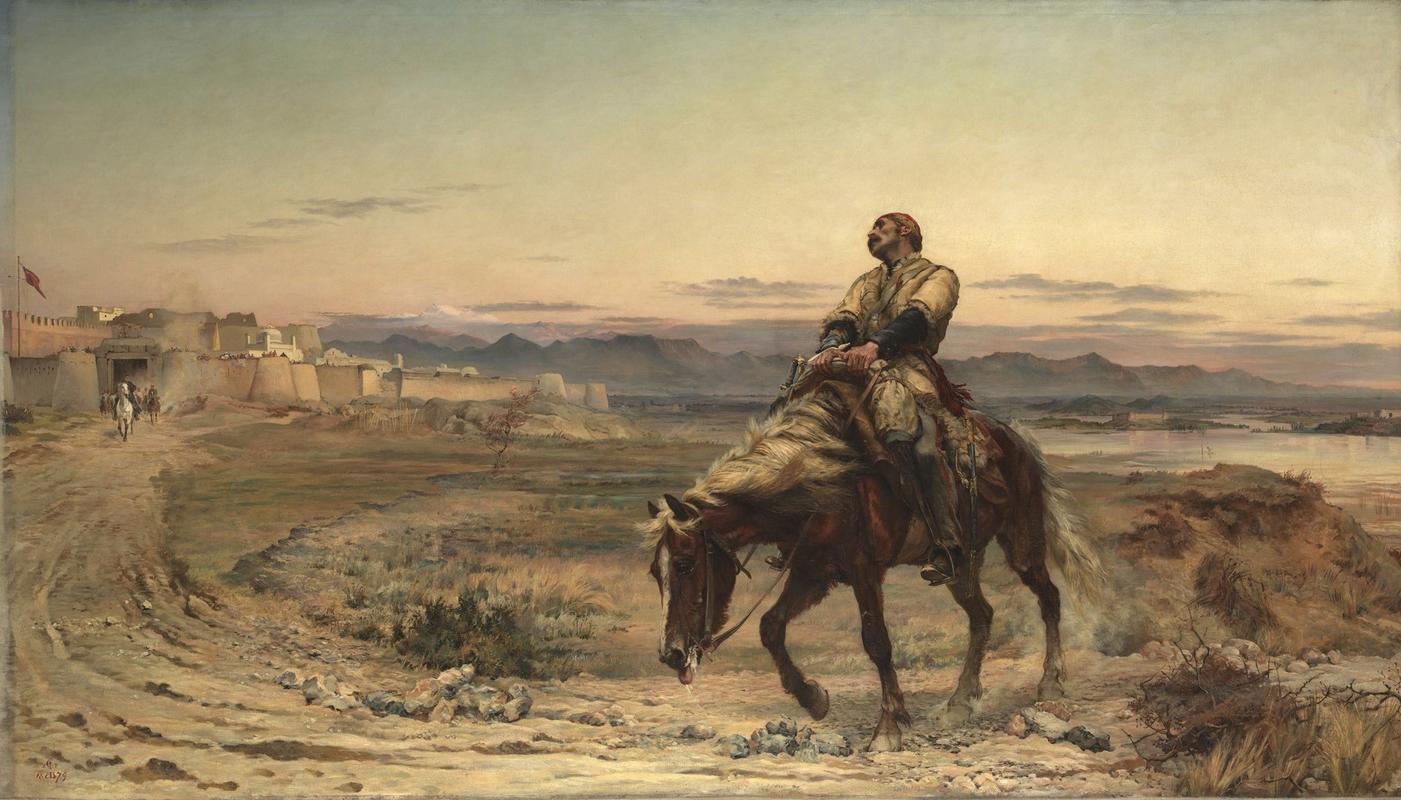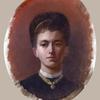Remnants of an Army is a masterpiece by Elizabeth Thompson, who became Lady Butler upon her marriage to an Irish officer of the British military two years earlier.
In Remnants, her brilliant use of the sad, Eeyore-like forms of the officer and his horse are like a more striking version of Don Quixote and Sancho Panza by Daumier, who lived until the year that Remnants of an Army was created.
Remnants is an item of British propaganda for the British-Afghan War. Thompson's towering genius almost got her elected as an associate to the Royal Academy in the same year that she released Remnants of an Army, and it frightened those bigoted Victorian jerks so much that they changed the rules afterwards to explicitly prohibit women from joining.
The most powerful pieces of propaganda, in the service of the greedy motives of a colonial empire, tend to be those which depict a forlorn, abject image of the people on the side of colonization. It elicits fear from those of us who should be on A&E's "Hoarders" for our weapons-collecting: think of the devastating "Daisy" ad of 1964, aired only once by the LBJ campaign on U.S. TV, showing a little girl, blond, of course, playing with daisies (I guess they didn't have time to train cute baby bunnies to gather around her and little songbirds to alight on her shoulders) before she is turned into a pile of dust by a nuclear weapon. Johnson's voiceover then threatens us not to vote for his opponent, if you want the little girl and her daisies to live! LBJ's little blond girl is quite a different symbol from Dr. William Brydon, inaccurately represented in Remnants of an Army as the sole survivor of a British retreat from Kabul in 1842, but the use of the forlorn individual as wartime propaganda is similar.
A convert to Catholicism married to an Irishman, Thompson was doing a big favor for the very same colonial power which chronically mistreated her husband's people. You probably know the term "buffalo soldier" from the Bob Marley song of the same name. The "buffalo soldiers" were Black people enlisted by the colonial authorities to exterminate indigenous people in nations surrounded by the United States. This is a classic example of the technique of "divide and conquer," mastered by the Roman and British empires. "When black buffalo soldiers slaughtered Native Americans, they were slaughtering a part of themselves."
My mom once told me she would carry her teachers around with her in her pocket, so they could guide her through life. My pockets are full of people debating with one another about colonialism and its justification through the rhetoric of security. As a proponent of peace, militarism gives me a headache. But we cannot blame soldiers, who, like the buffalo soldiers, are just trying to survive and make their parents proud. Can we blame Elizabeth Thompson, then, who transcended the anti-Irish bigotry of her own Anglican birth and married an Irish officer, who did the bidding of the crown by attacking the Afghans while simultaneously championing the rights of his own oppressed people? Can we blame her for realizing that if she painted military scenes in support of her husband's military campaign, the Royal Academy would, if only temporarily, look past her womanhood and allow people to see her work? She probably didn't have pockets in her skirts, but her purse would have been full of debate between her Irish in-laws and Queen Victoria.
Of course, after her wedding, no soul would dare call Elizabeth Thompson, Lady Butler a "woman"! Her alma mater was called "The Royal Female School of Art," because it admitted both women and ladies.

















I think that this artwork does a very good job of portraying its message in a convincing way, using neutral colors and browns to convey a sense of dead-ness and portraying what we can only assume to be the only survivor from an attack in a way that generates sympathy and a desire to support him in any way possible.